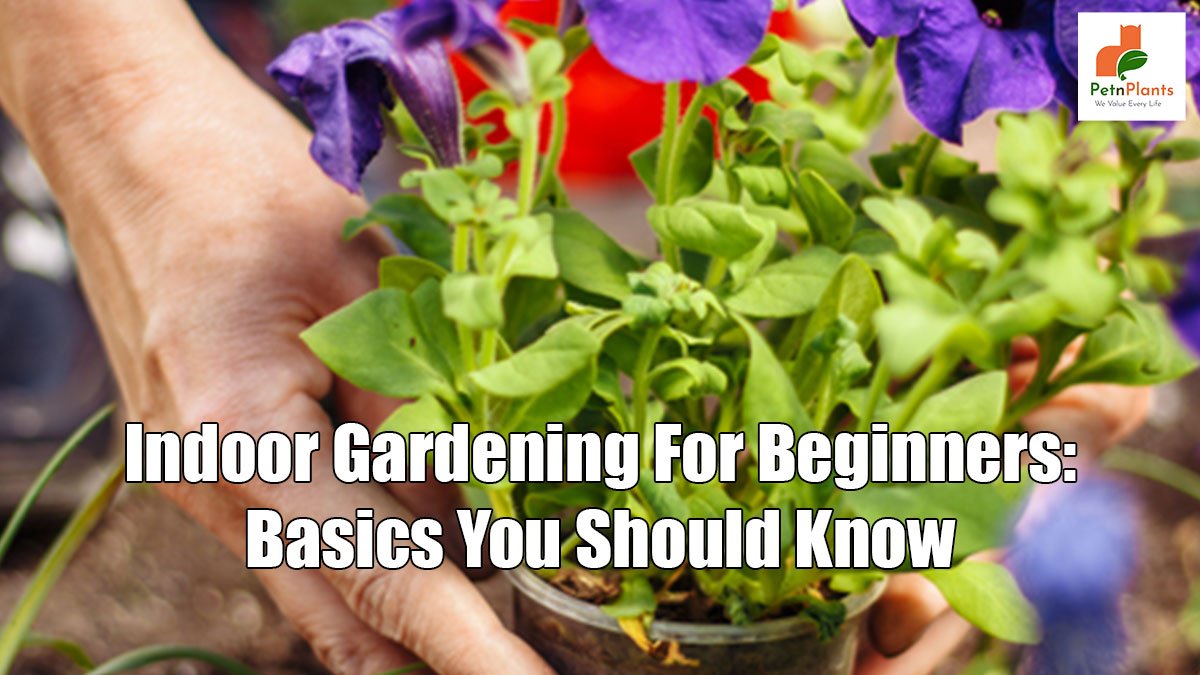How To
Latest
Pet Care
How to Groom Your Dog at Home with the Right Dog Grooming KitMarch 19, 2025
We Value Every Life

Have you thought about starting an indoor garden but didn’t know where to start? Well, you’re in luck! This blog post will give you all the basics to start indoor gardening. We’ll cover topics like what kind of plants are the best for indoors, how to pot them, and how to care for them. After reading this post, you’ll be well on your way to starting your own indoor garden!
Gardening indoors is a great way to start gardening if you don’t have much space or want a head start on the growing season. It’s also a great way to grow plants that wouldn’t do well in your outdoor garden.
Here are some reasons why you should consider gardening indoors:
You can control the temperature, humidity, and light levels when you grow plants indoors. This is perfect for delicate plants that wouldn’t survive outdoors or for starting seeds that need a warm, humid environment to germinate.
If you have a greenhouse or sunroom, you can start gardening early in the spring and grow plants later in the fall and winter. This allows you to enjoy fresh fruits and vegetables year-round!
A well-designed indoor garden can be a real showpiece in your home. Whether you grow flowering plants, foliage plants, or edible plants, an indoor garden can add beauty and Interest to your décor.
If you want to get started with indoor gardening, you should know a few basics. First, you’ll need to choose the right plants for your space. Consider the amount of sunlight and water your plants will need and the size of the pots or planters you’ll be using.
Next, you’ll need to prep your containers. Be sure to use a potting mix designed for indoor plants, and make sure your pots have drainage holes to prevent overwatering.
Once you’ve chosen your plants and prepped your containers, it’s time to get growing! Start by planting each seedling in its own individual pot or container. Water regularly, and give your plants plenty of light (a south-facing window is ideal).
With a little care and attention, you can grow healthy, beautiful plants indoors – no matter what the weather is like outside.
Indoor plants are a great way to bring life into your home and purify the air. But with so many different plants, it can be difficult to know which ones are best for indoor gardening. Here are our top picks for the best plants for indoor gardening:
Aloe vera is a succulent that is easy to care for and thrives in bright, indirect light. It is also known for purifying the air and producing oxygen.
Snake plants are another type of succulent that does well in bright, indirect light. They are also known for their ability to purify the air and produce oxygen.
Peace lilies are flowering plant that does well in shady areas. They are known for their ability to filter out harmful chemicals from the air and produce oxygen.
Spider plants are easy to care for and do well in bright and shady areas. They are known for their ability to purify the air and produce oxygen.
Golden pothos is a trailing plant that does well in moderate to bright light conditions. It is known for its ability to purify the air and remove harmful chemicals from it.
Indoor gardens are becoming increasingly popular as people look for ways to add greenery to their homes. If you’re new to indoor gardening, here are a few tips to get you started.
One of the most important aspects of indoor gardening is watering. Over-watering is one of the most common mistakes made by beginners, so it’s important to be careful not to water too often. Depending on the plant you’re growing, you’ll need to water it about once or every other week. Be sure to check the soil before watering to make sure it’s dry.
Another important consideration for indoor gardens is lighting. Most plants need at least six hours of sunlight each day, so choosing a location for your garden that gets plenty of light is important. If you don’t have a lot of natural light in your home, you can use grow lights to provide the necessary light for your plants.
Another factor to consider when growing plants indoors is temperature. Most plants do best in rooms between 65 and 75 degrees Fahrenheit. If your home is warmer or cooler than this, you may need to adjust your watering schedule or use a humidifier or fan to create the ideal conditions for your plants.
When it comes to indoor gardening, the soil is also an important consideration. For most plants, you’ll want to use a potting mix that contains peat moss or coco.
Assuming you want tips for a successful indoor garden:
Indoor gardening can be fun and rewarding, regardless of experience level. By following the tips in this article, you’ll be well on your way to success with your indoor garden. Remember to start small, keep things simple, and pay attention to your plant’s needs. With a little care and patience, you’ll be harvesting fresh fruits, vegetables, and herbs in no time.
0